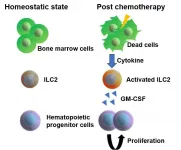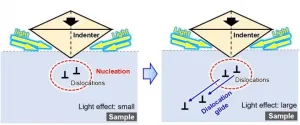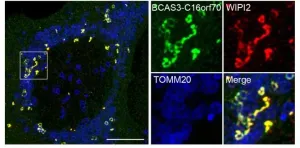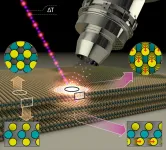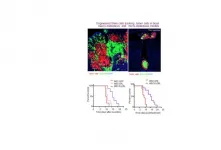Species are our livelihoods
Biodiversity doesn't feature enough in large-scale assessments of ecosystem services
2021-03-05
(Press-News.org) Functioning ecosystems provide the basis for security, basic material needs, health, social interaction and individual liberty. This is how the Millennium Ecosystem Assessment 2005 described it, dividing ecosystem services into the following categories: The provisioning services; goods such as food, water, firewood and timber, the regulating services; pollination, water filtering function of the soil, flood and erosion protection, and the cultural services; recreation, places of inspiration, and education. Many of these services are indirectly and directly linked to the presence of species. For this reason, species conservation is often put forward as a measure for the conservation of vital natural services.
"However, most previous studies argue that areas important for ecosystem services do not necessarily correspond to those important for biodiversity conservation," said senior author Prof Henrique Pereira from iDiv and MLU. "We were able to show that this is probably because these studies only look at a few ecosystem services, and species-linked services are rarely among them."
In their new study, the researchers selected nine different species-linked ecosystem services for which data were available on the occurrence and distribution of the species providing them in Europe. These are wild food, medicinal plants, fodder, pest control, carcass removal, seed dispersal, wildlife watching, hunting, and existence value; this is the benefit we derive from knowing that rare and endangered species continue to exist. To find out which species provide these services, they searched databases for functional characteristics such as medicinal value, edibility, but also their importance for hunting and wildlife watching.
The researchers then created individual maps of how the providers of these services are distributed in Europe. They then did the same for nine typical biophysical ecosystem services that are not linked to species, such as agricultural production, livestock farming and carbon storage. They compared these maps in computer models and calculated where there is spatial overlap and how the different ecosystem services influence each other.
The results show that, especially on a larger spatial scale, biophysical and species-linked ecosystem services often occur simultaneously. This became more evident the more ecosystem services were considered. The regions where species conservation and ecosystem services play a role thus coincided more often than previously assumed. Negative correlations between the two approaches were found predominantly for agricultural production, which, among other things, limits regulating ecosystem services such as water purification and cultural services such as natural beauty.
"With our study, we show that there are strong connections between species diversity and ecosystem services," said first author Dr Silvia Ceau?u, who conducted the study at iDiv and MLU. She recently joined the Centre for Biodiversity and Environmental Research at University College London. These connections need to be made more visible in assessments of nature's contributions to human wellbeing in order to fully understand how to manage and protect these benefits to humans."
"We're still lacking biodiversity data to truly map species-based ecosystem services at large scales," said Henrique Pereira. "So we need more research on the question of how ecosystem services at the landscape and regional scale depend on the abundance and traits of the species present." For Europe, the researchers are therefore currently establishing the EuropaBON project, which is intended to make this, and other such data available to stakeholders in the future.
INFORMATION:
[Attachments] See images for this press release:
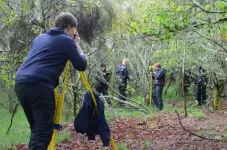
ELSE PRESS RELEASES FROM THIS DATE:
2021-03-05
PHILADELPHIA - Intellectual disability puts individuals at higher risk of dying earlier in life than the general population, for a variety of medical and institutional reasons. A new study from Jefferson Health examined how the COVID-19 pandemic has affected this group, which makes up 1-3% of the US population. The study, published today in the New England Journal of Medicine (NEJM) Catalyst, found that intellectual disability was second only to older age as a risk factor for dying from COVID-19.
"The chances of dying from COVID-19 are higher for those with intellectual disability than they are for people with congestive heart failure, kidney disease or lung disease," says lead author Jonathan Gleason, MD, the James D. and Mary Jo Danella ...
2021-03-05
Osaka, Japan - Chemotherapy has a damaging effect on hematopoietic stem and progenitor cells (HSPCs) in bone marrow. However, once chemotherapy ends, HSPCs regenerate, a process that has remained unknown--until now. In a new study, researchers from Osaka University have identified the molecular mechanism by which HSPCs recover after injury.
HSPCs reside in the bone marrow and give rise to several types of blood cells, such as red blood cells (which carry oxygen), some white blood cells (which are important for the immune system) and platelets (which are necessary to stop bleeding). Because HSPCs constantly divide to generate new cells, they are particularly sensitive to injury induced by, for example, chemotherapy. ...
2021-03-05
Semiconductor materials play an indispensable role in our modern information-oriented society. For reliable performance of semiconductor devices, these materials need to have superior mechanical properties: they must be strong as well as resistant to fracture, despite being rich in nanoscale structures.
Recently, it has become increasingly clear that the optical environment affects the structural strength of semiconductor materials. The effect can be much more significant than expected, especially in light-sensitive semiconductors, and particularly since due to technological constraints ...
2021-03-05
Background: Although caregivers of patients with eating disorders usually experience a heavy caregiving burden, the effects of social support on caregivers of patients with eating disorders are unknown. This study aimed to investigate how social support for mothers who are caregivers of patients with an eating disorder improves the mothers' mental status and, consequently, the symptoms and status of the patients.
Methods: Fifty-seven pairs of participants were recruited from four family self-help groups and one university hospital in Japan. Recruitment was conducted from July 2017 to August 2018. Mothers were ...
2021-03-05
Autophagy is an intracellular degradation process of cytosolic materials and damaged organelles. Researchers at Ubiquitin Project of TMIMS have been studying the molecular mechanism of mitophagy, the selective autophagy process to eliminate damaged mitochondria. PINK1 (a serine/threonine kinase) and Parkin (a ubiquitin ligating enzyme: E3) work together to ubiquitylate the outer membrane proteins of damaged mitochondria, then ubiquitin chains are recognized as signals for autophagy degradation. Dysfunction of mitophagy causes a decrease in mitochondrial quality with overproduction of ROS, and is linked to neurodegenerative diseases like Parkinson's disease.
In Autophagy machinery, cellular components targeted for degradation are engulfed by phosphatidylinositol-3-phosphate (PI3P)-rich ...
2021-03-05
Frequently occurring chronic skin inflammation like in atopic dermatitis (AD or neurodermatitis) and psoriasis have different causes such as genetic predisposition, stress or allergens. These frequently occurring skin diseases are mostly attributed by biomedical scientists to a disturbed immune system, although the noticeable thickening and flaking of the epidermis, which is the outermost layer of skin, also indicates a disruption of the epithelial cells. A team of researchers from the University Clinic for Dermatology and the Clinical Institute for Laboratory Medicine at MedUni Vienna has now been able to identify new molecular ...
2021-03-05
WHO: Giovanni Traverso, MB, BChir, PhD, Associate Physician, Division of Gastroenterology, Brigham and Women's Hospital; corresponding author of a new article published in JAMA Network Open.
Peter Chai, MD, MMS, Assistant Professor, Department of Emergency Medicine, Brigham and Women's Hospital; first author.
WHAT: In the age of COVID-19, mobile robotic telehealth systems could help clinicians and patients interact without contact. Last spring, some health care systems deployed robotic systems within a hospital to evaluate and interact with patients. In a JAMA Network Open article, Traverso and colleagues report the results of a national survey and a cohort study in an emergency department (ED), which analyzed patients' satisfaction with an initial evaluation ...
2021-03-05
MoS2 thin films of superposed alternating layers of molybdenum and sulfur atoms form a two-dimensional semiconducting surface. However, even a surprisingly low-intensity blue light pulse is enough to alter the properties of the surface and make it metallic. This has now been demonstrated by a team at BESSY II.
The exciting thing is that the MoS2 layers in this metallic phase are also particularly active catalytically. They can then be employed, for example, as catalysts for splitting of water into hydrogen and oxygen. As inexpensive catalysts, they could facilitate the production of hydrogen - an energy ...
2021-03-05
Approximately 15-to-30 percent of patients with metastatic breast cancer have brain metastasis (BM), with basal-like breast cancer (BLBC) metastasizing to the brain most frequently. The prognosis for BLBC-BM patients is poor, as the blood-brain barrier prevents most therapeutics from reaching the brain. Testing candidate therapies in clinical trials is also challenging because animal models that mimic BM are limited. In a new study, researchers from Brigham and Women's Hospital and collaborators engineered a bimodal tumor-suppressing and killing molecule that can be delivered to the brain by stem cells. They tested ...
2021-03-05
Beijing, 26 February 2021: the journal Cardiovascular Innovations and Applications (CVIA) has just published the third issue of Volume 5. This issue brings together important research from authors in the USA and China, including several important papers concerned with the various cardiological implications of COVID-19.
Papers in the issue are as follows.
RESEARCH PAPERS
Diyu Cui, Yimeng Liao, Jianlin Du and Yunqing Chen
A Meta-analysis of Major Complications between Traditional Pacemakers and Leadless Pacemakers
(http://ow.ly/CgYO30rz3eA)
Yue Wu, Guoyue Zhang, Rong Hu and Jianlin Du
Risk of Target Organ Damage in Patients with Masked Hypertension versus
Sustained Hypertension: A Meta-analysis (http://ow.ly/x63E30rzjEp)
Jing Li, Lijie Sun, Fang Wang, Bing Liu, Hui Li, Guodong ...
LAST 30 PRESS RELEASES:
[Press-News.org] Species are our livelihoods
Biodiversity doesn't feature enough in large-scale assessments of ecosystem services

